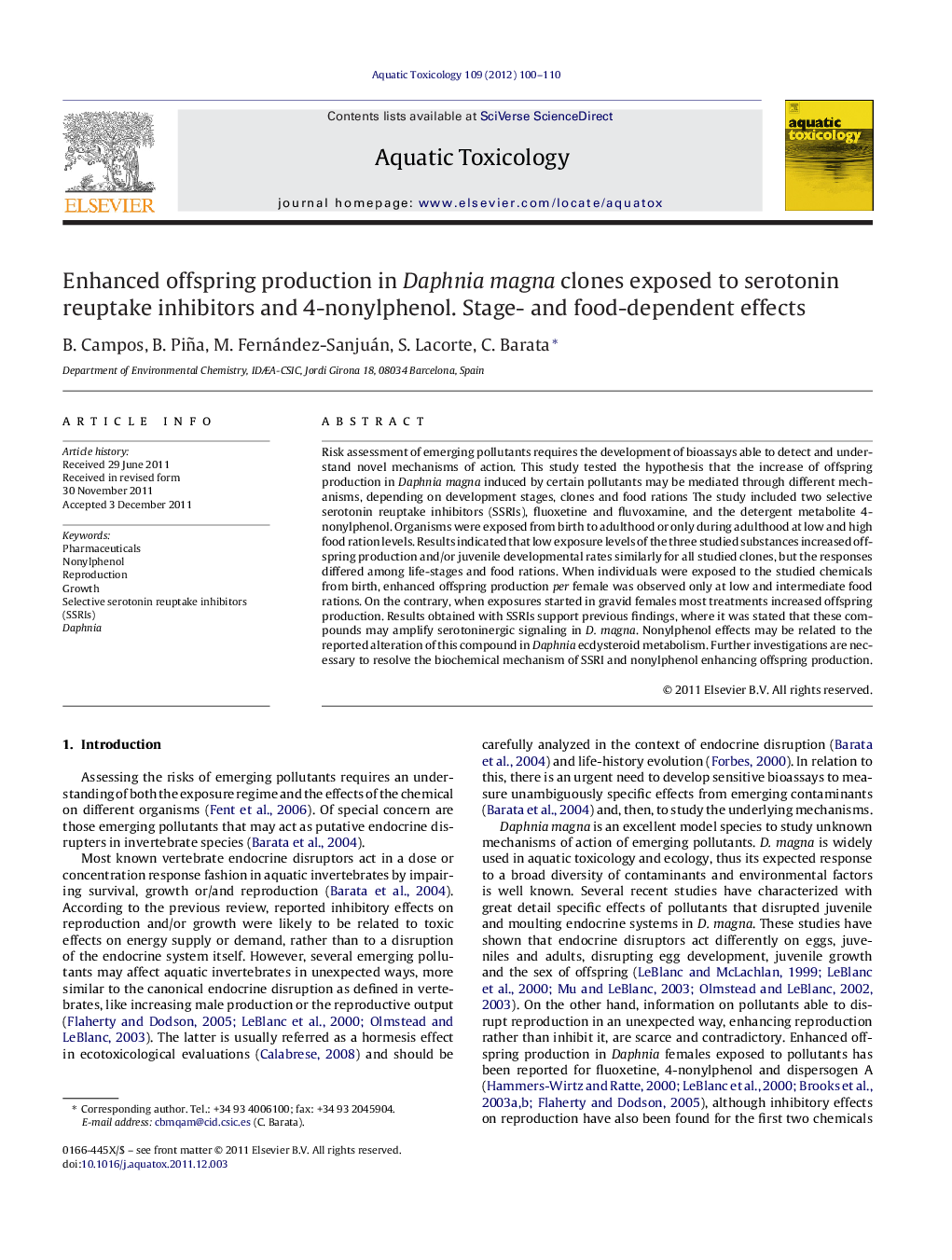| Article ID | Journal | Published Year | Pages | File Type |
|---|---|---|---|---|
| 6382815 | Aquatic Toxicology | 2012 | 11 Pages |
Risk assessment of emerging pollutants requires the development of bioassays able to detect and understand novel mechanisms of action. This study tested the hypothesis that the increase of offspring production in Daphnia magna induced by certain pollutants may be mediated through different mechanisms, depending on development stages, clones and food rations The study included two selective serotonin reuptake inhibitors (SSRIs), fluoxetine and fluvoxamine, and the detergent metabolite 4-nonylphenol. Organisms were exposed from birth to adulthood or only during adulthood at low and high food ration levels. Results indicated that low exposure levels of the three studied substances increased offspring production and/or juvenile developmental rates similarly for all studied clones, but the responses differed among life-stages and food rations. When individuals were exposed to the studied chemicals from birth, enhanced offspring production per female was observed only at low and intermediate food rations. On the contrary, when exposures started in gravid females most treatments increased offspring production. Results obtained with SSRIs support previous findings, where it was stated that these compounds may amplify serotoninergic signaling in D. magna. Nonylphenol effects may be related to the reported alteration of this compound in Daphnia ecdysteroid metabolism. Further investigations are necessary to resolve the biochemical mechanism of SSRI and nonylphenol enhancing offspring production.
⺠We studied effects of fluoxetine, fluvoxamine and nonylphenol on Daphnia reproduction. ⺠The three chemicals increased offspring production and juvenile developmental rates. ⺠Greater effects of fluoxetine and fluoxamine occurred at low food rations. ⺠Results indicate that fluoxetine and fluoxamine may amplify serotoninergic signaling. ⺠Nonylphenol effects may be related to altered ecdysteroid metabolism.
